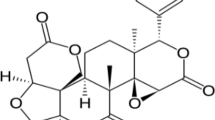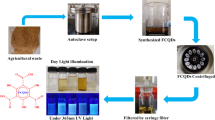Abstract
It is very important to be able to accurately and rapidly measure the cholesterol level in the human body, as cholesterol is associated with various diseases, such as Alzheimer’s disease. In this work, a novel method of detecting cholesterol using chemiluminescence (CL) based on a newly prepared semiconductor catalyst, Cu2−x Se nanoparticles (Cu2−x Se NPs), was developed. It was found that the Cu2−x Se NPs strongly enhanced the CL signal by producing a large number of reactive oxygen species (ROS) in the luminol–Cu2−x Se NPs system. Based on the UV-vis-NIR absorption spectra, zeta potential, CL spectrum, and an investigation of the ROS, a possible mechanism for the CL was proposed. This CL-based method was successfully applied to determine cholesterol. It was found that the enhanced CL was proportional to the concentration of cholesterol over the range of 82 nM to 1.96 μM with a detection limit of 0.062 nM, and that added cholesterol was successfully detected in human serum with a mean recovery of 97 %.








Similar content being viewed by others
References
Neha B, Monika T, Vinay G. ZnO–CuO composite matrix based reagentless biosensor for detection of total cholesterol. Biosens Bioelectron. 2015;67:263–71.
Hyuck JL, Kyle JK, Akiko K, Jeffrey SD, Mi HL. Cholesterol and metal ions in Alzheimer’s disease. Chem Soc Rev. 2014;43:6672–82.
Wang P, Li J, Wang P, Hu CR, Zhang DL, Michael S, et al. Label-free quantitative imaging of cholesterol in intact tissues by hyperspectral stimulated Raman scattering microscopy. Angew Chem Int Ed. 2013;52:13042–6.
Sacks FM, Pfeffer MA, Moye LA, Rouleau JL, Rutherford JD, Cole TG, et al. The effect of pravastatin on coronary events after myocardial infarction in patients with average cholesterol levels. N Engl J Med. 1996;335:1001–9.
Batra N, Tomar M, Gupta V. ZnO–CuO composite matrix based reagentless biosensor for detection of total cholesterol. Biosens Bioelectron. 2015;67:263–71.
Mondal A, Jana NR. Fluorescent detection of cholesterol using beta-cyclodextrin functionalized graphene. Chem Commun. 2012;48:7316–8.
Li RM, Xiong C, Xiao ZY, Ling LS. Colorimetric detection of cholesterol with G-quadruplex-based DNAzymes and ABTS(2−). Anal Chim Acta. 2012;724:80–5.
Giri AK, Sinhamahapatra A, Prakash S, Chaudhari J, Shahi VK, Panda AB. Porous ZnO microtubes with excellent cholesterol sensing and catalytic properties. J Mater Chem A. 2013;1:814–22.
Ballesta CJ, Ametis CJ, Morales SJ, Megia FA, Valencia MC, Santoyo GF, et al. Electrochemiluminescent disposable cholesterol biosensor based on avidin-biotin assembling with the electroformed luminescent conducting polymer poly(luminol-biotinylated pyrrole). Anal Chim Acta. 2012;754:91–8.
Li S, Chen D, Zhou Q, Wang W, Gao L, Jiang J, et al. A general chemiluminescence strategy for measuring aptamer–target binding and target concentration. Anal Chem. 2014;86:5559–66.
Ma GZ, Zhou JY, Tian CX, Jiang DC, Fang DJ, Chen HY. Luminol electrochemiluminescence for the analysis of active cholesterol at the plasma membrane in single mammalian cells. Anal Chem. 2013;85:3912–7.
Marquette CA, Ravaud S, Blum LJ. Luminol electrochemiluminescence-based biosensor for total cholesterol determination in natural samples. Anal Lett. 2000;33:1779–96.
Nabi A, Rashid A, Yaqoob M. Chemiluminescent determination of cholesterol by flow injection analysis with immobilized cholesterol oxidase. Anal Lett. 2012;29:2281–8.
Hong L, Liu AL, Li GW, Chen W, Lin XH. Chemiluminescent cholesterol sensor based on peroxidase-like activity of cupric oxide nanoparticles. Biosens Bioelectron. 2013;43:1–5.
Radziszewski B. Untersuchungen über Hydrobenzamid, Amarin und Lophin. Ber Dtsch Chemischen Ges. 1877;10:70–5.
Dodeigne C, Thunus L, Lejeune R. Chemiluminescence as a diagnostic tool. A review. Talanta. 2000;51:415–39.
Kadir A, Chris DG. Metal-enhanced chemiluminescence: advanced chemiluminescence concepts for the 21st century. Chem Soc Rev. 2009;38:2556–64.
Su YY, Chen H, W ZM, Lv Y. Recent advances in chemiluminescence. Appl Spectrosc Rev. 2007;42:139–76.
Liu ML, Lin Z, Lin J-M. A review on applications of chemiluminescence detection in food analysis. Anal Chim Acta. 2010;670:1–10.
Roda A, Guardigli M, Pasini P, Mirasoli M, Michelini E, Musiani M. Bio- and chemiluminescence imaging in analytical chemistry. Anal Bioanal Chem. 2005;541:25–36.
Massimo G, Roda A. Analytical chemiluminescence and bioluminescence: latest achievements and new horizons. Anal Bioanal Chem. 2012;402:69–76.
Fan AP, Cao ZJ, Li H, Kai M, Lu JZ. Chemiluminescence platforms in immunoassay and DNA analyses. Anal Sci. 2010;25:587–98.
Zhang XR, Baeyens WRG, Garcia CAM, Ouyang J. Recent developments in chemiluminescence sensors. Trend Anal Chem. 1999;18:384–91.
Seidel M, Niessner R. Chemiluminescence microarrays in analytical chemistry: a critical review. Anal Bioanal Chem. 2014;406:5589–612.
Hu YF, Zhang ZJ, Li GK. A novel chemiluminescence method for the determination of ergometrine maleate in serum sample without chemiluminescence reagent. Talanta. 2010;436:69–74.
Su YY, Xie YN, Hou XD, Lv Y. Recent advances in analytical applications of nanomaterials in liquid-phase chemiluminescence. Anal Chem. 2015;49:201–32.
Lv Y, Zhang ZJ, Chen FN. Chemiluminescence microfluidic system sensor on a chip for determination of glucose in human serum with immobilized reagents. Talanta. 2003;59:571–6.
Zhang ZF, Cui H, Lai CZ, Liu LJ. Gold nanoparticle-catalyzed luminol chemiluminescence and its analytical applications. Anal Chem. 2005;77:3324–9.
Duan CF, Cui H, Zhang ZF, Liu B, Guo JZ, Wang W. Size-dependent inhibition and enhancement by gold nanoparticles of luminol–ferricyanide chemiluminescence. J Phys Chem C. 2007;111:4561–6.
Cui H, Guo JZ, Li N, Liu LJ. Gold nanoparticle triggered chemilumineseence between luminol and AgNO3. J Phys Chem C. 2008;112:11319–23.
Cui H, Zhang ZF, Shi MJ. Chemiluminescent reactions induced by gold nanoparticles. J Phys Chem. 2005;B109:3099–103.
Guo JZ, Cui H. Lucigenin chemiluminescence induced by noble metal nanoparticles in the presence of adsorbates. J Phys Chem C. 2007;111:12254–9.
Gorman BA, Francis PS, Dunstan DE, Barnett NW. Tris(2,2-bipyridyl)ruthenium(II) chemiluminescence enhanced by silver nanoparticles. Chem Commun. 2007;4:395–7.
Xu J, Zhang WX, Yang ZH, Ding SX, Zeng CY, Chen LL, et al. Large-scale synthesis of long crystalline Cu2−x Se nanowire bundles by water-evaporation-induced self assembly and their application in gas sensing. Adv Funct Mater. 2009;19:1759–66.
Lie SQ, Zou HY, Chang Y, Huang CZ. Tuning of the near-infrared localized surface plasmon resonance of Cu2-xSe nanoparticles with lysozyme-induced selective aggregation. RSC Adv. 2014;4:55094–9.
Li WL, Lie SQ, Du YQ, Wan XY, Wang TT, Wang J, et al. Hydrophilic Cu2−x Se/reduced graphene oxide nanocomposites with tunable plasmonic properties and their applications in cellular dark-field microscopic imaging. J Phys Chem B. 2014;2:7027–33.
Zou HY, Gao PF, Gao MX, Huang CZ. Polydopamine-embedded Cu2−x Se nanoparticles as a sensitive biosensing platform through the coupling of nanometal surface energy transfer and photo-induced electron transfer. Analyst. 2015;140:4121–9.
Hessel CM, Pattani VP, Rasch M, Panthani MG, Koo B, Tunnell JW, et al. Copper selenide nanocrystals for photothermal therapy. Nano Lett. 2011;11:2560–6.
Okimura H, Matsumae T, Makabe R. Electrical properties of Cu2−x Se thin-films and their application for solar-cells. Thin Solid Films. 1980;71:53–9.
Zhang SS, Zhong H, Ding CF. Ultrasensitive flow injection chemiluminescence detection of DNA hybridization using signal DNA probe modified with Au and CuS nanoparticles. Anal Chem. 2008;80:7206–12.
Lie SQ, Wang DM, Gao MX, Huang CZ. Controllable copper deficiency in Cu2−x Se nanocrystals with tunable localized surface plasmon resonance and enhanced chemiluminescence. Nanoscale. 2014;6:10289–96.
Wang DM, Gao MX, Gao PF, Yang H, Huang CZ. Carbon nanodots-catalyzed chemiluminescence of luminol: a singlet oxygen-induced mechanism. J Phys Chem C. 2013;117:19219–25.
Acknowledgments
The present work was financially supported by the National Natural Science Foundation of China (NSFC, no. 21375109). The authors appreciate the kind help of Sireesh Babu Maddinedi in relation to manuscript editing.
Author information
Authors and Affiliations
Corresponding author
Ethics declarations
The use of human serum was approved by the University of Southwest’s Institutional Review Board. A signed individual written informed consent agreement was obtained from the participants before beginning the work on this study, and the research was not performed outside our country of residence.
Conflict of interest
The authors declare no competing financial interest.
Additional information
Published in the topical collection Highlights of Analytical Chemical Luminescence with guest editors Aldo Roda, Hua Cui, and Chao Lu.
Electronic supplementary material
Below is the link to the electronic supplementary material.
ESM 1
(PDF 108 kb)
Rights and permissions
About this article
Cite this article
Zhang, F.F., Zou, H.Y., Lan, J. et al. Catalytic chemiluminescent detection of cholesterol in serum with Cu2−x Se semiconductor nanoparticles. Anal Bioanal Chem 408, 8771–8778 (2016). https://doi.org/10.1007/s00216-016-9342-1
Received:
Revised:
Accepted:
Published:
Issue Date:
DOI: https://doi.org/10.1007/s00216-016-9342-1




